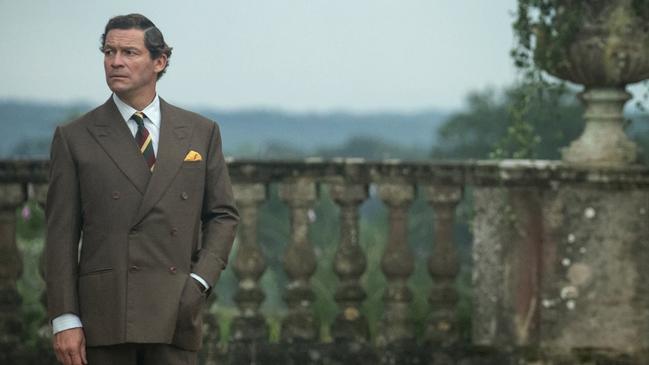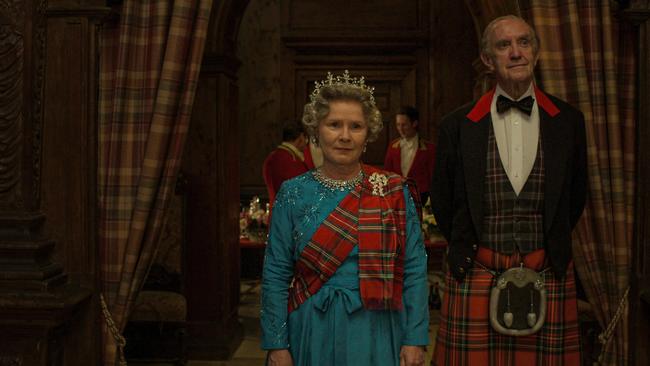History v his story: who’s to say which Charles is which?
The Crown has been criticised for distorting the facts, but it is handy to know some version of the royals’ story if we are ever to get close to the truth.

There is something weird about the fifth season of The Crown falling so close on the heels of the death of the queen. And perhaps that’s all the explanation you need for Dame Judi Dench’s outburst against the show. She’s a friend of Camilla, the Queen Consort, and whenever someone you know is represented on television it will always tend to beggar belief.
The details of the casting, of course, matter, at least a bit. When the young actor Josh O’Connor – a total Charles look-alike – played him in season four of The Crown, the effect was uncanny. Are people going to swallow Dominic West – a handsome and decisively masculine actor who once impersonated Richard Burton – in the same way? And how much does it matter?
West recently offered to forgo his role as a representative of the Prince’s Trust, but King Charles said no, no, he was an actor, he must ply his trade. And West – who objects to Dench-inspired caveats about historical fiction at the start of the show – has spoken impressively and movingly about how the tampon-talk incident was the kind of conversation everyone sometimes has. He has even expressed sympathy for the King’s recent displeasure about the pen that didn’t work.
It’s all a matter of degrees of resemblance, as well as imaginative leaps of sympathy on the viewer’s part, with this strange inhabitation and reanimation of the stuff of history. You may well think that Jonathan Pryce as the Duke of Edinburgh has no automatic empathic pull towards the real-life figure in the way he did with Pope Francis in The Two Popes (with Anthony Hopkins as Pope Benedict). How much does it matter? No one who watched the old 10-hour BBC documentary in the late 1960s of Prince Philip’s beloved uncle and mentor Lord Louis Mountbatten would have seen much resemblance in Charles Dance’s crusty and craggy characterisation. And John Lithgow would not have sounded very Churchillian to baby boomer ears in the first season of The Crown.
On the other hand, all those eminent palace custodians who were turned into a couple of characters – Pip Torrens as the Queen’s private secretary Tommy Lascelles and Charles Edwards as a conglomerate of his successors – are utterly credible.
And in the first two seasons that’s true of the central trio, Claire Foy as the young Queen, Matt Smith as Prince Philip and Vanessa Kirby as Princess Margaret. Older people who were children in the young days of the Queen’s accession will know that these Windsors were a bit different but the kind of sap and quiet resolve in Foy’s case, the tempest of anger and frustration in Smith’s, the heartbreaking desperation of Kirby, are each monuments to the long ago youth of these bright and contrasting stars of regal glamour and reticence, and their very youthfulness has a weird allegorical relationship to the audience.
The figure who carries this with maximum elan in the later seasons is in fact Helena Bonham-Carter as Princess Margaret – not because she looks like the tearaway starry sister (or indeed like Kirby) but because she is a distillation of all the extravagance and yearning and frustration of the glamorous sister whose heart was broken so early in her life.
Older people learned the story at their mother’s knees of how Margaret was not allowed by her sister to marry Peter Townsend. And, of course, you can argue that the history of the reign of Elizabeth II was always an old-fashioned women’s magazine story – but it’s an objective fact that The Crown will familiarise all sorts of people with a thousand details of British history by presenting it from the point of view of these ordinary people – people we know from the intimate dramas of their lives – even as the British Empire dissolves and reconfigures as the Commonwealth, even as Suez catches the Brits on the wrong foot, the Profumo scandal brings down a government, and Thatcher looms as a figure of inspiration and loathing.

Dench has succeeded in getting Netflix to announce that The Crown is a “fictional dramatisation … inspired by real events”. Australian actor Elizabeth Debicki says that initially playing Diana in the latest season created “enormous pressure” and that it felt “insurmountable”, but things have calmed down: “There’s a huge amount of room for interpretation and that’s the value and beauty of The Crown as well.”
After all, factual accounts vary too. John Major would hardly admit to the story of Charles begging him to get the Queen to abdicate if it were true.
Dench’s point – that “the closer the drama comes to our present times, the more freely it seems willing to blur the lines between historical accuracy and crude sensationalism” can be a self-fulfilling prophecy. It’s precisely because the annus horribilis and the death of Diana, as well as her manifest war against Charles, are so close to contemporary memory that so much offence is caused and why rival versions abound. It’s interesting that Pryce, an actor of the very first rank and “not a monarchist”, should say: “I started out as a reluctant viewer and just got hooked”.
History, we should remember, begins as story, a fact the French language reminds us of. What’s the story, we say. And we may discover that Lawrence of Arabia didn’t take Damascus, at least like that, and that he didn’t look much like Peter O’Toole. Or that Thomas More was not just a great humanist and martyr who wrote Utopia but that he also burnt heretics. Or, contrariwise, that Thomas Cromwell, the stealer of the monasteries, was much more of a thug than he appears to be from Hilary Mantel’s anti-Catholic anti-More representation in her Wolf Hall sequence.
But it is handy to know some version of the story if we are ever to get close to the truth of history.

It’s not at all that fiction should be substituted for truth, even though Mark Twain said Australian history read like a series of beautiful lies. But we need to know the legend if we’re ever going to be in a position to print the truth.
Should we care? When audiences in their millions sit down to watch Imelda Staunton in the fifth season of The Crown surrounded by the quivering beauty of Debicki and the urbanity of Pryce and the dynamic handsomeness of West, some version of the story that has been bequeathed to history will stir. But the facts themselves mean nothing until the imagination kindles them.
It may be that Staunton will outshine Olivia Colman while neither of them touch Foy. But something is astir in this re-enactment of a set of at once hypothetical and attested stories.
History should be able to look after itself with this degree of imaginative pressure to kick it on.





To join the conversation, please log in. Don't have an account? Register
Join the conversation, you are commenting as Logout